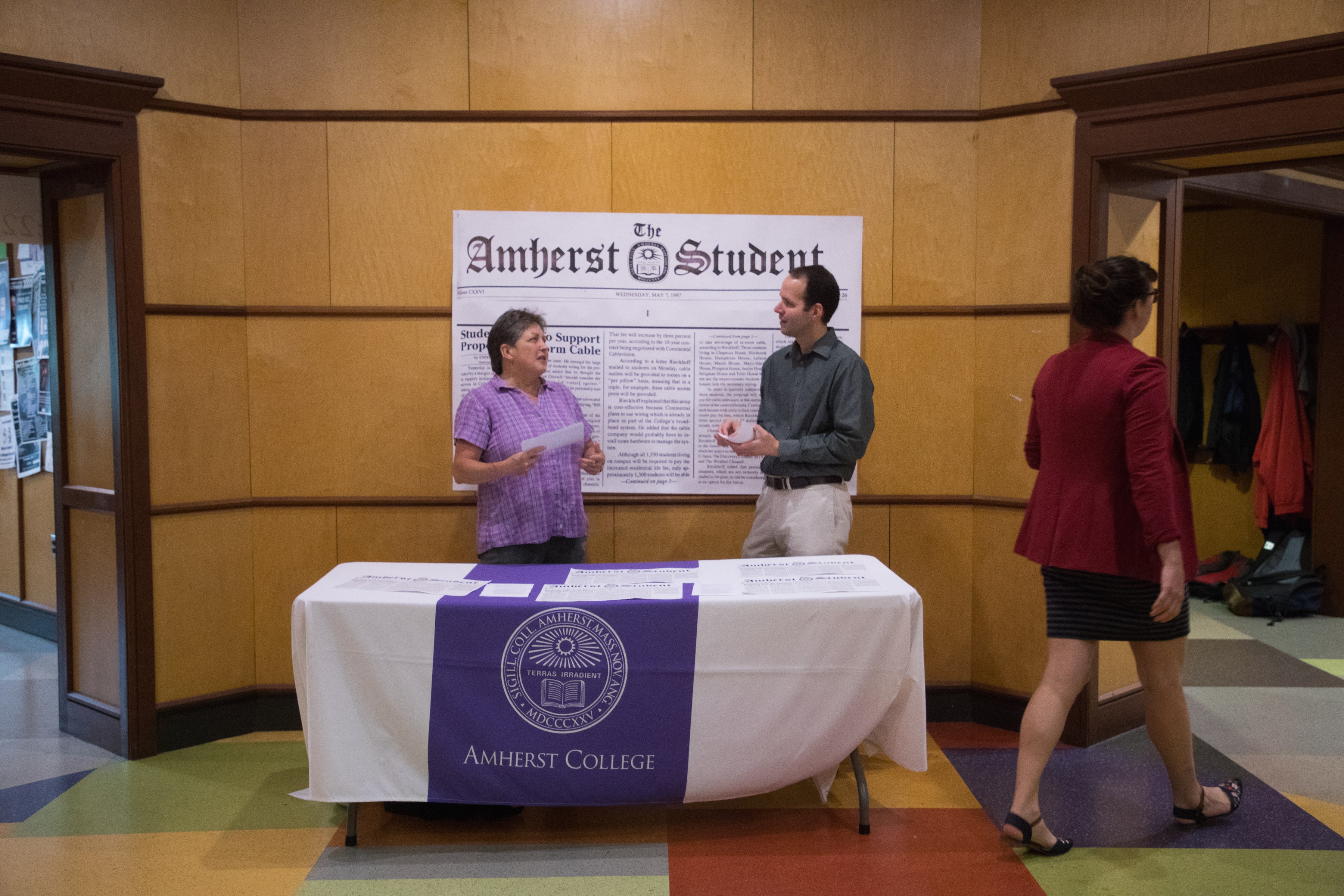

The College Council distributed a survey to students through email regarding the college’s television programming on Wednesday, Sept. 20. Voting will remain open until Oct. 4.
Since 1997, Amherst has provided cable television in dormitories’ common areas. As usage of these televisions declines, the Council is giving students the option of reallocating some or all of the approximately $100,000 spent on cable to other student activities.
Professor Andrew Dole, who currently serves on the College Council, said in an email that this cost to students is the primary concern regarding cable TV. According to Dole, “Every student pays a fairly large amount of money to the College for cable TV, but very few students actually use the service.”
The survey was sent out by Chief Information Officer David Hamilton and included three different options with pros and cons listed for each.
Students could choose to maintain the “status quo” and continue receiving consistent access to cable programming. With this option, programming would stay the same. The survey noted that this is particularly useful for live access to sports programming and political coverage.
Alternatively, Amherst could eliminate its cable services from common areas altogether. While certain programs would be harder to access online, this option would allow the College Council to return the $100,000 currently spent on cable to the Student Affairs budget.
The third option would result in the pursuit of “a new model of providing television programming,” the survey said. According to the survey, this option would entail installing more modern programming with channel guides, digital video recorder and pay-per-view programming while maintaining access to sports programming. This change could potentially save the student body up to $60,000, but the survey also noted that if cable usage increased under this new program, costs could rise even higher than it currently is and some costs may be covered through a student billing service.
Benjamin Aliaga ’21 voted to eliminate cable from dorm rooms completely.
“When most students watch TV, they use Netflix or Hulu or some sort of streaming service,” Aliaga said. Considering how little cable is currently used, he said, he would rather see the $100,000 go to the Student Affairs budget.
“I think it would be good to funnel at least part of the money into [RC’s budgets], so we could do more fun things as a dorm,” Aliaga said. First-year dorms in particular could use more money for “bonding activities,” he added.
According to Dole, the individual or office that would decide how the money would be spent is still undecided.
“There would have to be a subsequent set of conversations about how the Student Affairs budget would be impacted by this,” he wrote.
He added later in an in-person interview, “The process of deciding what would happen to the money would involve both the administration and the student body.”
Dole acknowledged that “the options that we have are pretty limited [...] to what the internet service providers are willing to offer us in terms of services and pricing.”
Juliet Mayer ’18 and Camille Blum ’20 both voted for the third option. They each acknowledged that some access to cable is crucial.
“[Cable] could be really useful for certain students who are interested in sports or in certain political news channels, and that can be pretty important for schoolwork,” said Blum.
They also agreed that the student body as a whole would benefit if cable costs went down and funds were redirected.
“I think certain clubs on campus are underfunded […] and they all seem to be clubs directed toward women and minorities,” Blum said, referring to the resource centers as examples.
“It seems good for everyone,” Mayer added. “Maybe people could pay a little extra to have individual service in their rooms,” she said when asked about the possibility of costs increasing under the third option.
Blum, however, expressed concern about the possibility that students would have to individually pay if they want cable. “It makes it more like a privilege,” she said.
Once the voting window closes, Dole said next steps will be discussed most likely through committees made up of faculty and students, and renegotiations with the cable provider will take place. Amherst signs its cable contract on a yearly basis, so no changes will be implemented until July 31, 2018.